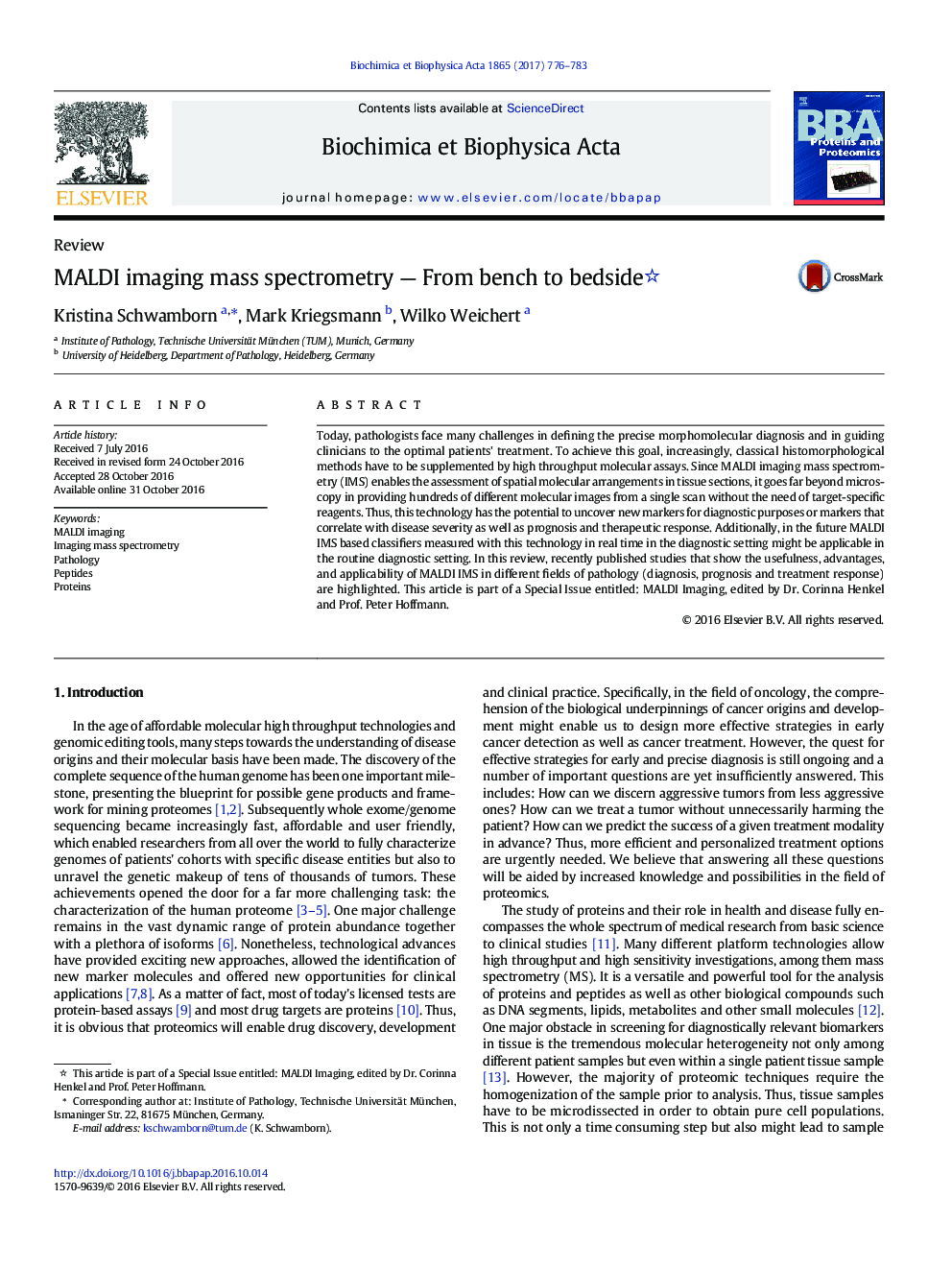| Article ID | Journal | Published Year | Pages | File Type |
|---|---|---|---|---|
| 5131934 | Biochimica et Biophysica Acta (BBA) - Proteins and Proteomics | 2017 | 8 Pages |
â¢MALDI IMS has the potential to uncover new markers for diagnostic or prognostic purposes and therapeutic response.â¢In theory, the implementation of the technology in real time routine diagnostic workflows is possible.â¢Large scale as well as follow up studies are necessary to take MALDI IMS to towards clinical implementation.
Today, pathologists face many challenges in defining the precise morphomolecular diagnosis and in guiding clinicians to the optimal patients' treatment. To achieve this goal, increasingly, classical histomorphological methods have to be supplemented by high throughput molecular assays. Since MALDI imaging mass spectrometry (IMS) enables the assessment of spatial molecular arrangements in tissue sections, it goes far beyond microscopy in providing hundreds of different molecular images from a single scan without the need of target-specific reagents. Thus, this technology has the potential to uncover new markers for diagnostic purposes or markers that correlate with disease severity as well as prognosis and therapeutic response. Additionally, in the future MALDI IMS based classifiers measured with this technology in real time in the diagnostic setting might be applicable in the routine diagnostic setting. In this review, recently published studies that show the usefulness, advantages, and applicability of MALDI IMS in different fields of pathology (diagnosis, prognosis and treatment response) are highlighted. This article is part of a Special Issue entitled: MALDI Imaging, edited by Dr. Corinna Henkel and Prof. Peter Hoffmann.
